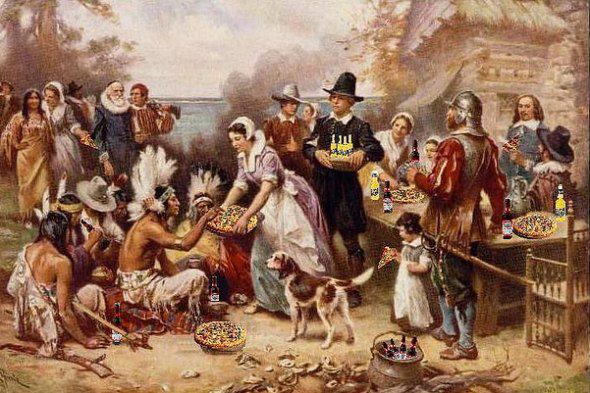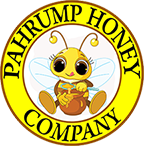
There’s no denying that honey and the bees that make it have become an integral part of America’s way of life, not only because of the sweet liquid they provide, but their pollination work ensures that we have a healthy global food supply (Fun Fact: honey bee pollination is an agricultural benefit that accounts for nearly $15 billion in added crop value, according to our friends at the FDA). But did you know that honey bees as we know them today are actually not native to this land? Since we are celebrating the first true American holiday later this week, we thought it would be fun to take a look at honey and honey bees in the time of the Pilgrims in this edition of Honey in History: Colonial America!
Although there was a now-extinct species of honey bee in the area, as evidenced by a 14 million-year-old fossil unearth in Nevada in 2009 (believed to have died out long before the 17th century), the European honey bees that buzz around America today were first introduced to our land by European settlers who came over in the early 1620s. Realizing their value as pollinators, they were sent along to help establish the many fruits and other crops that the Pilgrims brought over.
As time went on, the honey bees began to settle in and spread into the woods of the wild New World, leaving the skeps they arrived in (not the most efficient way to keep bees, as is and the bees within were destroyed during the honey harvest) and establishing new hives within hollowed out trees, leading to innovations in how the bees were kept and honey harvested.
In addition to their pollination work, honey bees were kept as essential livestock by many farmers and provided a source of income through the production of honey, beeswax, and even mead (a rumored favorite beverage of Queen Elizabeth I). Beeswax became a major export and had a multitude of uses in colonial times, including:
- Candles
- Shoe wax
- Lipstick
- Waterproofing
- Coating wine bottles and barrels
But beeswax wasn’t the only valuable product made by Honey Bees in Colonial America. In fact, honey was used to prepare food and beverages, to make cement, to preserve fruits, to concoct furniture paste-polish and varnish and for medicinal purposes. And, since it was produced locally and didn’t have to be imported, honey was a preferred sweetener used in place of the highly-taxed sugar from islands like Jamaica.
But how would the first Thanksgiving have looked if it were not for the humble honey bees? Well, the bounty certainly would be have been less diverse without such favorites as squash and berries. And just like the holiday, the craft and art of beekeeping and honey harvesting has grown and evolved over the centuries, but still remains as essential today as it was at the founding of our great country.
National Honey Board
